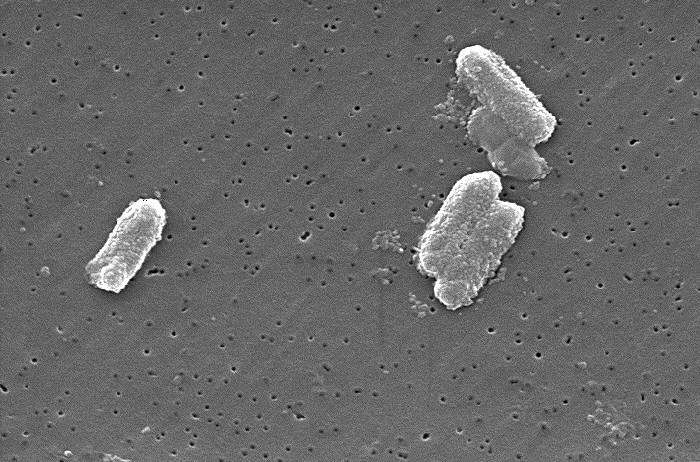Drug-resistant 'nightmare bacteria' show worrisome ability to diversify and spread

A family of highly drug-resistant and potentially deadly bacteria may be spreading more widely—and more stealthily—than previously thought, according to a new study from Harvard T.H. Chan School of Public Health and the Broad Institute of MIT and Harvard.
Researchers examined carbapenem resistant Enterobacteriaceae (CRE) causing disease in four U.S. hospitals. They found a wide variety of CRE species. They also found a wide variety of genetic traits enabling CRE to resist antibiotics, and found that these traits are transferring easily among various CRE species. The findings suggest that CRE is more widespread than previously thought, that it may well be transmitting from person to person asymptomatically, and that genomic surveillance of these dangerous bacteria should be increased.
The study will appear online January 16, 2017 in PNAS (Proceedings of the National Academy of Sciences).
"While the typical focus has been on treating sick patients with CRE-related infections, our new findings suggest that CRE is spreading beyond the obvious cases of disease. We need to look harder for this unobserved transmission within our communities and healthcare facilities if we want to stamp it out," said William Hanage, associate professor of epidemiology at Harvard Chan School and senior author of the study.
CRE are a class of bacteria that are resistant to multiple antibiotics, including carbapenems, which are considered last-resort drugs when other antibiotics have failed. CRE, which tend to spread in hospitals and long-term care facilities, cause an estimated 9,300 infections and 600 deaths in the U.S. each year, according to the U.S. Centers for Disease Control and Prevention (CDC)—and incidence is on the rise. Tom Frieden, director of the CDC, has called these 'nightmare bacteria' because they are resistant to some of the last-ditch treatments available to doctors battling resistant infections.
The researchers looked at about 250 samples of CRE from hospitalized patients from three Boston-area hospitals and from one California hospital. Their goal was to obtain a snapshot of the genetic diversity of CRE, to define the frequency and characteristics of outbreaks, to find evidence of strains being transmitted within and between hospitals, and to learn how resistance is being spread among species. Previous studies have typically examined just one outbreak at a time.
Researchers found what Hanage termed a "riot of diversity," both among CRE species and among carbapenem resistance genes. They also found that resistance genes are moving easily from species to species, contributing to a continually evolving threat from CRE.
In addition, the researchers found resistance mechanisms that hadn't been seen before—implying that there are more to be discovered. The finding highlights the need for vigilance in searching for as yet unknown forms of resistance as they evolve and emerge.
"The best way to stop CRE making people sick is to prevent transmission in the first place," said Hanage. "If it is right that we are missing a lot of transmission, then only focusing on cases of disease is like playing Whack-a-Mole; we can be sure the bacteria will pop up again somewhere else."
More information: Multi-institute analysis of carbapenem resistance reveals remarkable diversity, unexplained mechanisms, and limited clonal outbreaks, PNAS, www.pnas.org/cgi/doi/10.1073/pnas.1616248114



















